“Shock,” often, is the right word. And tax season is a good time to address this.
The topic here is the “Income Related Monthly Adjustment Amount,” or IRMAA. That’s the formal name for the additional premium that some individuals and couples who are enrolled in Medicare pay for their coverage.
To be specific: Most beneficiaries in 2022 will pay $170.10 a month for Medicare Part B, which covers doctors’ fees and other expenses. But…if your income on your federal tax return for 2020 (more in a moment) exceeded $91,000 as an individual, or $182,000 as a couple filing jointly, your monthly premium this year likely will be larger than $170.10.

If, for instance, your income in 2020 exceeded the amounts noted above by so much as a penny, your monthly Part B premium jumps almost $70. From that point, the premium continues to climb in line with your income, eventually topping off at almost $580 a month. (See table.) What’s more, a similar math applies to high-income beneficiaries enrolled in Medicare Part D, which covers prescription drugs; here, too, monthly premiums escalate along with income.
Yes, all this is painful. But what’s more painful, as our reader indicates, is that these surcharges often come as a complete surprise. The first time that many retirees learn about these fees is when they open a letter from the Social Security Administration (which handles Medicare billing), notifying them that their monthly premiums in the coming year will be going up.
(Note: The federal government uses a two-year “look back” to determine whether you should pay a surcharge. That’s why premiums for 2022, for instance, are based on your 2020 tax return.)
Why the surprise? Because many retirees aren’t aware these surcharges even exist, or don’t understand how they’re triggered. Again, your income (specifically, your “modified adjusted gross income”) is the key. As such, large—and, frequently, one-time—financial events can push you into surcharge territory.
Examples: Did you sell your house or a rental property and end up with a sizable capital gain? Did you withdraw a large sum from your IRA? Are you still working and earning a six-figure salary? Did you convert a large chunk of your traditional IRA to a Roth? Any of these circumstances could inflate your income substantially—and leave you blindsided by IRMAA.
The larger point: For anyone getting ready to enroll in Medicare, as well as current beneficiaries, “IRMAA planning” should be part of your tax planning—anticipating how financial transactions today can affect your taxes tomorrow. The good news: There are ways to get relief from, or lessen the impact of, Medicare surcharges; an online search—“how to avoid IRMAA”—can get people started.
I recently started using qualified charitable distributions. Because the money goes directly from my IRA to the charity, I’m not supposed to take a charitable deduction. But I’m getting charitable gift receipts identical to when I donated by check or credit card. What’s more, there’s nothing on the check that shows it’s a QCD. I have two questions. First, do financial institutions notify the IRS that I’m making a QCD? Second, isn’t the system ripe for fraud? It appears a person could “double dip”—donating with a QCD and taking a charitable deduction.
Interesting questions. No, your IRA custodian won’t report to the Internal Revenue Service that you did a QCD; that burden is on you. And yes, a person could cheat on his or her taxes in the way you suggest. But the IRS wasn’t born yesterday.
To start, a QCD is a smart, and perfectly legal, way to reduce your taxes. If you’re at the point where you’re required to withdraw funds annually from your IRA, you can exclude that withdrawal from your adjusted gross income on your tax return if you give the money to charity.
You’re correct: If you use a QCD, you can’t take a charitable itemized deduction for the same gift; there’s no double tax break. Still, as you indicate, people might be tempted to do just that—particularly given that your IRA custodian isn’t notifying the government about your QCD. A person might well think: How is the IRS going to know?
The answer: Charitable deductions are a common audit target, says Ed Slott, an IRA expert in Rockville Centre, N.Y. That’s because such deductions are easy for the IRS to verify: The agency asks simply to see your charitable receipts. If you’re donating to a charity with a QCD and claiming a deduction for that same donation—and have only a single receipt from the charity involved—well, the jig is up.
“If you claim something you can’t prove—or, in this case, double-dip with a QCD and an itemized deduction for the same gift—you are leaving yourself open for costly penalties,” Mr. Slott says.
Two additional notes. First, the reason your IRA custodian doesn’t report your QCD to the government is that the custodian doesn’t know, and has no way of knowing, if a particular distribution meets all of the conditions to be a QCD, Mr. Slott says. (For instance: If you receive any benefits from the charity that receives your donation, that would disqualify your gift from being a QCD.) Again, the taxpayer is responsible for entering the QCD on the tax return.
Second, the fact that a person uses a QCD doesn’t preclude him or her from itemizing, Mr. Slott says. If you don’t use the standard deduction on your tax return, and if you have enough deductions to itemize, you can take advantage of both QCDs and itemized charitable deductions. That said, many taxpayers today are using the large standard deduction and don’t itemize.
Mr. Ruffenach is a former reporter and editor for The Wall Street Journal. Ask Encore examines financial issues for those thinking about, planning and living their retirement. Send questions and comments to.
Dow Jones & Company, Inc.








